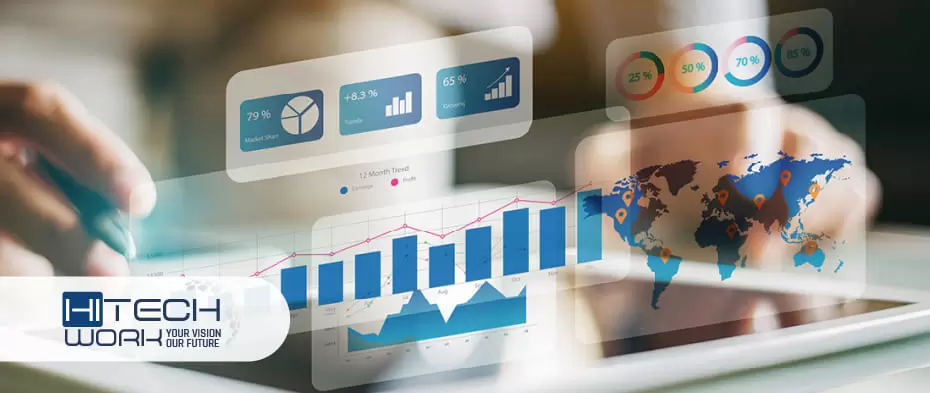Every business uses some kind of technology. For some, it might simply be vehicles and landline telephones. But many others utilize much fresher hardware and software solutions for their daily tasks. Pieces of information collectively known as technographic data are what describe these solutions. Technographic data benefits extend to all areas of business and finance. They help to see the company from the perspective of the level of their technological advancement. Let us dive deeper into the advantages of analyzing companies from this perspective.
Information about technological capabilities
Technographic data most generally refers to all data points that in one way or another describe the technology used by a particular firm and how this firm uses it. Through this data, one can find out the company’s technological capabilities and how they measure in the context of the whole industry or region.
Specifically, this information describes the firm’s technological stack. This means all kinds of data about the hardware and software tools that the company is using. Technographics should include as much information about the tool itself as possible.
This allows exploring companies and industries in two separate but related directions. On the one hand, we can analyze companies through the tools that they use and the data on how they are using them. For this purpose, technographic data would also include the data points on how the firm implements updates and develops its technological stack.
On the other hand, we can look at the tools themselves. The popularity and the ways in which the technological solutions are used will tell us a lot about the companies that produce them. Analyzing such businesses by their products allows for making predictions about their future and growth potential. Additionally, the spread of particular kinds of tools in specific industries can lead to important insights into these industries and general market trends.
Thus, technographic data can be applied in multiple ways to better understand market conditions as well as the technological capabilities of particular companies. For those that have such information, it can become a very valuable asset when making important decisions and looking for beneficial opportunities.
The main benefits of using technographic data for analysis
Viewing the world from the perspective of technology makes a lot of sense these days. After all, technology is everywhere, we use it so often and to complete so many tasks that we hardly even notice it anymore.
In business, however, noticing when and how technology is used can be very beneficial. It provides an opportunity to discover a lot about the firms using it and the direction in which tech markets are headed.
Thus, we use technographics to make sure that the usage of technology is analyzed, and crucial conclusions are drawn from it. Here are some of the most important advantages of analyzing companies and industries with the help of technographic data.
- Tech companies on the rise can be discovered. Investors are always looking for start-ups offering high-quality products and having a lot of future potential for growth. Technographic data helps identify the firms whose tech products are gaining popularity in various industries. Further analyzing these companies and how their technology is used in business settings might reveal incredible investment opportunities.
- Businesses can improve their own technological stack. Analyzing competitors and other companies to see how they utilize technology provides a great learning opportunity. Businesses that look at technographic data might find the tools that they can implement in their own company. Additionally, they might learn from the way other firms utilize these tools and adapt to their own needs.
- Technographics help extract important market insights. Analyzing the spread and usage of particular types of technology allows for uncovering crucial insights about market conditions and trends. Specific locations or industries can be explored in this way to understand how technology shapes the market. This can lead to high-quality plans of action for businesses and investment funds.
- Technographic data boosts sales intelligence. Technographic segmentation allows the grouping of companies based on their relationship with technology. When the companies are segmented it is easier to generate leads for B2B firms. Ultimately, it allows for preparing sales pitches that take the technological capabilities of the company into account. Naturally, this is especially useful for B2B firms that sell tech products. However, other B2B companies can also benefit from understanding the strong and weak sides of their potential customers.
These are some of the technographic data analysis advantages for anyone who is undertaking this type of research. Now let us briefly look at how technographics are especially useful for developing new technological solutions for business use.
Finding the path to the future
Technographic data analysis provides opportunities to figure out what capacities of technology are currently still missing as far as business needs go. By looking at various features of the tech products used in business, researchers are able to generate ideas for even more powerful tools.
Comparing the information on technology implementation with other alternative data on internal company procedures allows for identifying tasks that are yet to be automated. Technological solutions in these areas would be more than welcome.
Thus, both academic researchers and entrepreneurs can benefit from looking at the way technology is used for business purposes. Technographic data lets them find the directions in which to work when thinking about the technology of the future. Having this information tech developers and other interested parties are better equipped to use their resources appropriately.






